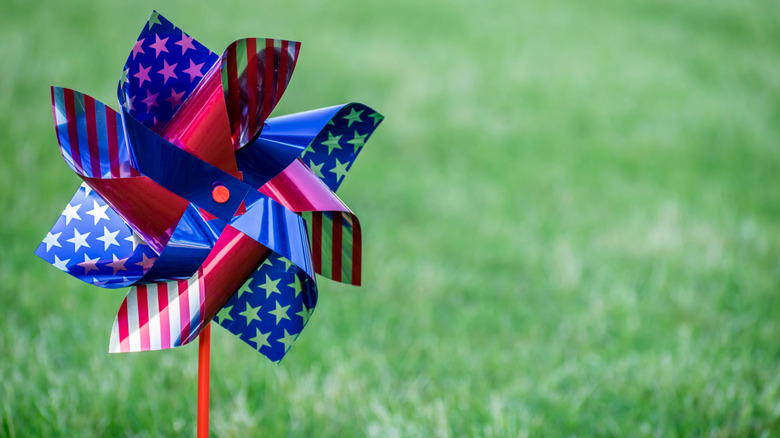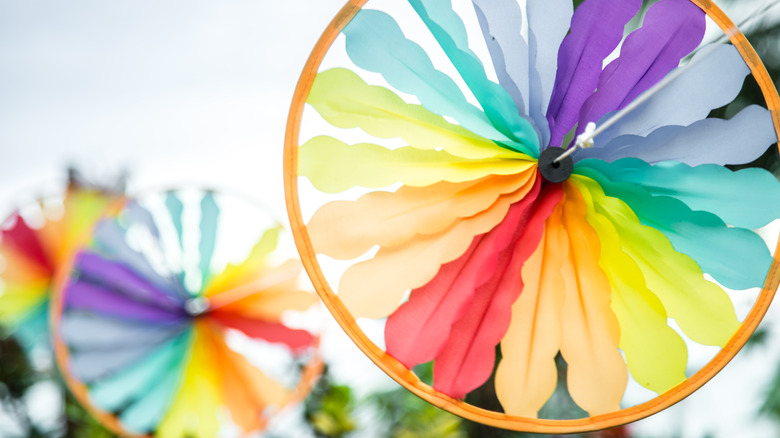People love decorating their yards and gardens, and not just with plants. Common lawn ornaments include gazing balls, seasonal flags, and the merrily-spinning whirligigs. These items may seem mundane now (though concrete geese in bikinis probably still raise some eyebrows), but they weren’t always so ubiquitous. Each one became more popular over time, often from some kind of superstition or cultural trend. For example, garden gnomes originated in 19th century Germany to protect gardens from bad luck, while plastic flamingos rose to fame in the 1960s as a sort of tacky rebellion against the boundaries of social classes. The history of the whirligig, however, is a little more mysterious, as there’s not much known about where exactly it originated.
Whirligigs are a broad category that basically includes any kind of item that spins. When referring to those that are used as lawn ornaments, these types are powered by the wind. They can take the form of a statue, a spinning object on a stake, or something that hangs from the eaves and can be made of metal, plastic, cloth, or any combination thereof. They also range from the classic pinwheel shape to more creative versions, like prop planes with working propellers or birds with moveable wings. Since they’re seen everywhere in our yards and gardens, you may be wondering where they came from.
History of the whirligig

Historians can’t pinpoint exactly where the whirligig was invented; instead, they think it developed independently in several places around the globe. That’s probably due to the fact that whirligigs are so simple and easy to make, so many people discovered how to create versions of them independent from one another. You can make the most basic version that’s simply a toy by threading a piece of string through the holes of a button and pulling it taut to make the button spin. The common lawn ornaments we see in our neighborhoods today are a bit more complex and are powered by the wind, but this is how whirligigs started.
The name of these lawn ornaments originated with the Middle-English whirlegigg, meaning “whirling top.” But evidence of the earliest whirligigs is far older. Early types, made of materials like bone and clay and probably used as children’s toys, have been found at Indigenous American archaeological digs. Similar toys became popular during the Great Depression because children could make them out of accessible materials like buttons and string. Whirligigs were also popular in the Appalachian region in the 1800s — not as toys, but as a form of folk art. These are still sought after by antique dealers and art collectors. Today’s lawn ornaments probably evolved from a combination of these early toys and weathervanes, tools designed by farmers to gauge wind direction.
Why add a whirligig to your outdoor space

What purpose does a whirligig serve? Most of them simply let you know whether the wind is blowing. Some also have a weathervane component so they can tell you the direction of the wind. If you have a squirrel problem, the motion of the decoration may help deter squirrels from your garden. Some types are designed to make noise or transmit vibrations into the soil, which are thought to repel burrowing animals like moles. However, experts say this is a myth. Whirligigs may scare off moles for a few weeks or months, but then they’ll simply get used to the noise and return.
Ultimately, most people set up whirligigs in their yards for the same reason they display other common lawn ornaments: simple fun and enjoyment. These decorations add interest to your space and showcase your personal style. And it’s easy to find a unique piece, since there’s such a wide variety of whirligigs available. Search your favorite home decor store for “whirligigs” or “pinwheels,” and you’ll find everything from charming folk-art options to cartoonish lobsters with whirling claws. If you’re looking to spruce up your yard or garden, a whirligig is an easy solution.



